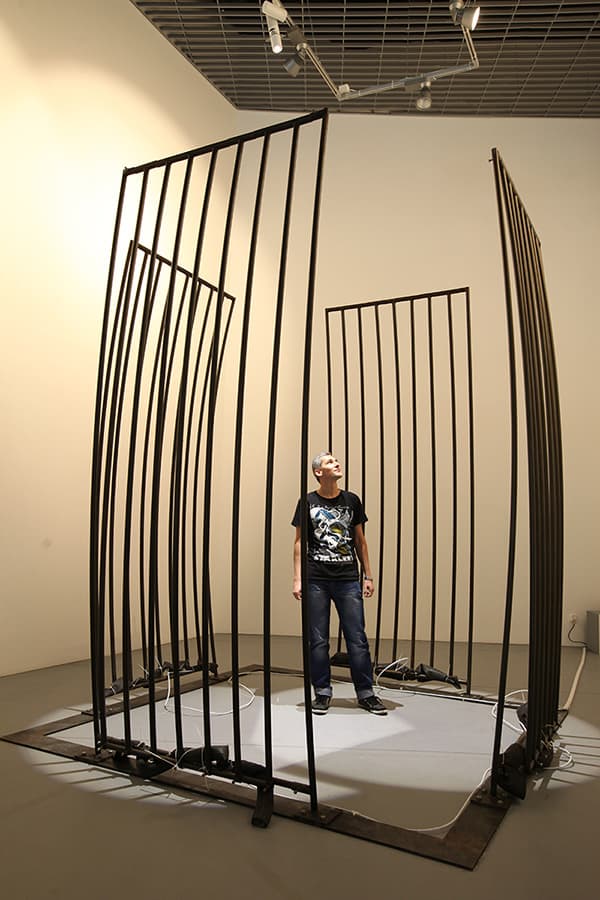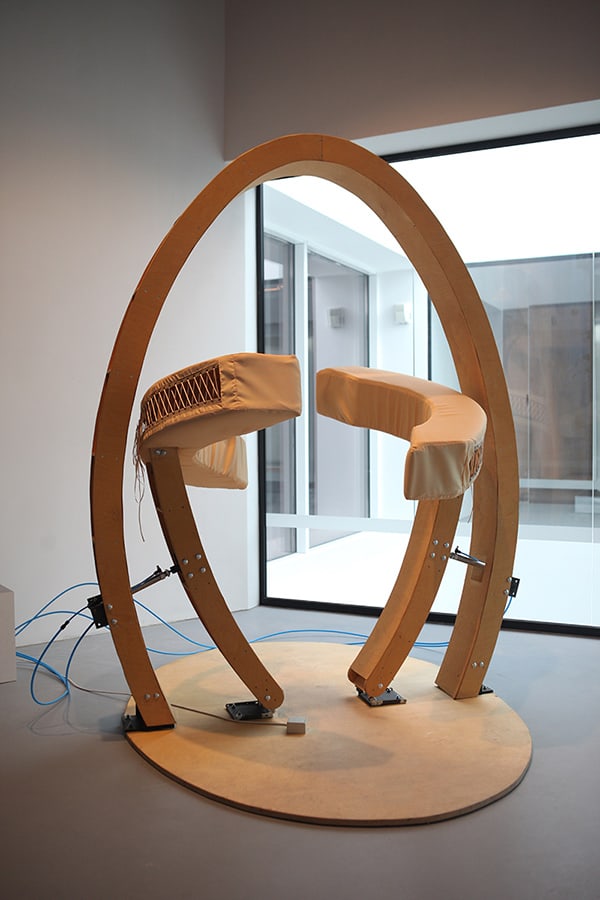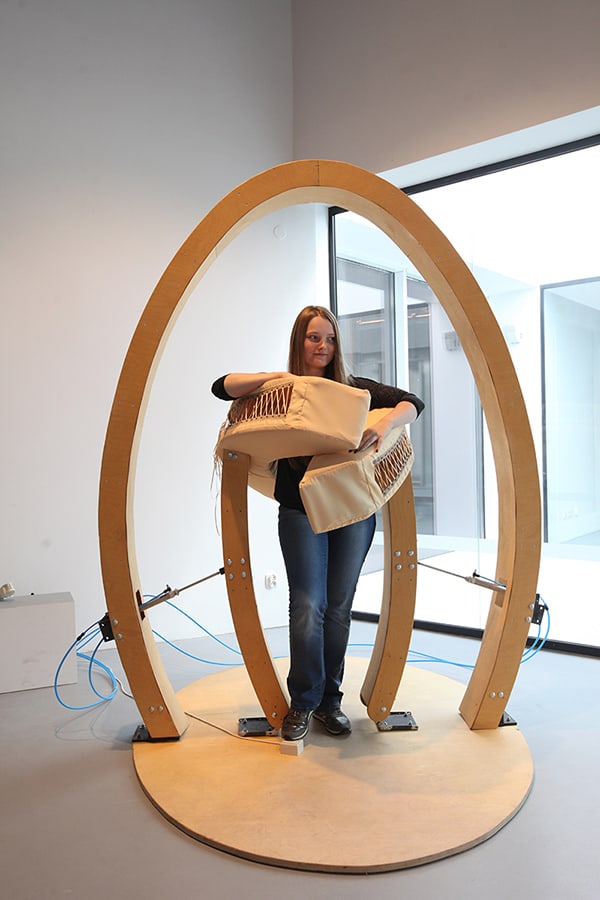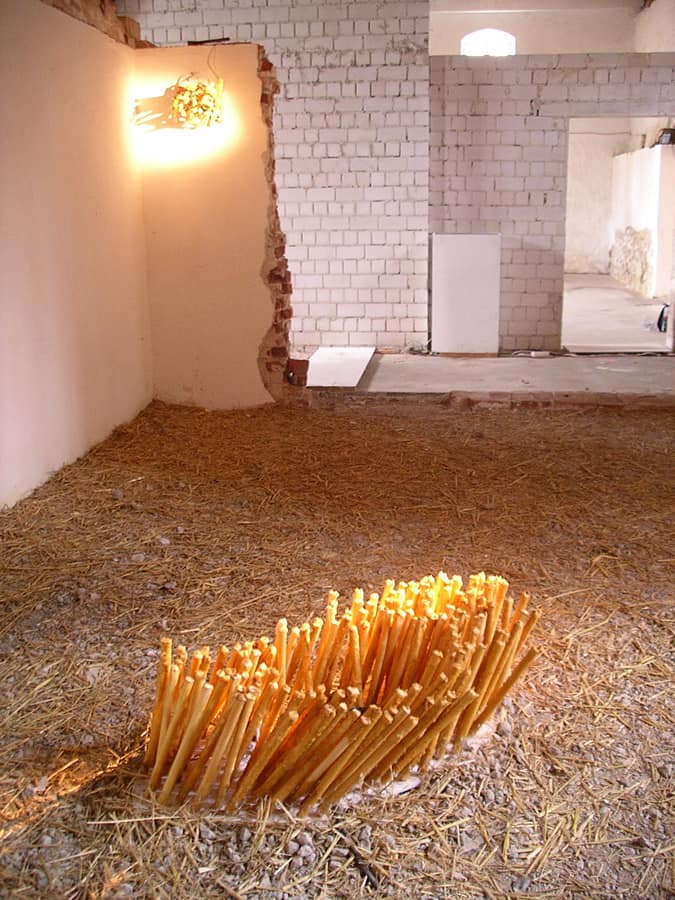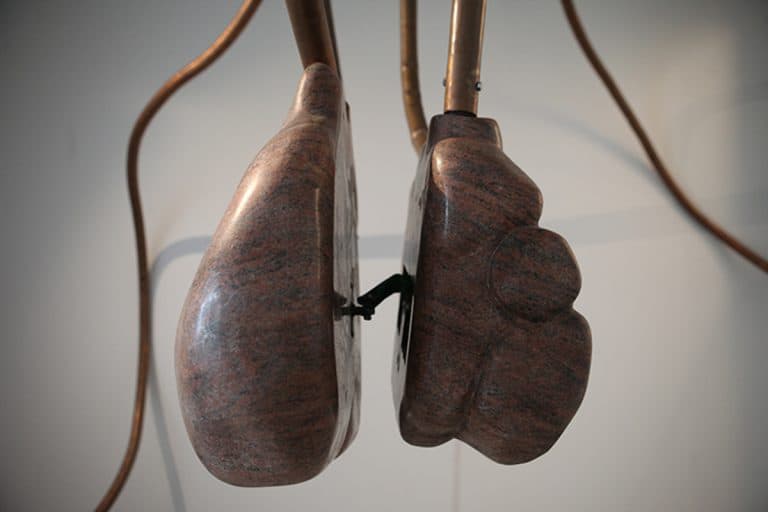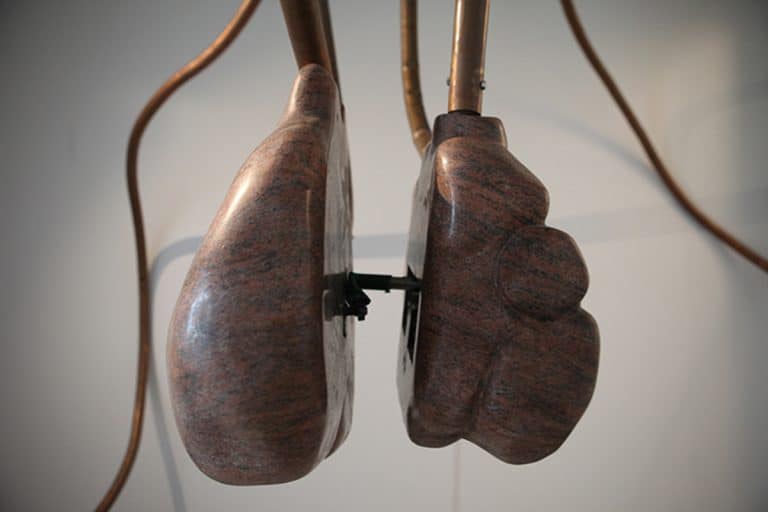Embodiment *series
[2005-2009]
Shelter
Red granite, copper, motor
H 50cm x W 60cm x D 50m
[2005]
Cell
Steel, tire-tubes, compressed-air
H 3m x W 2,5m x D 2,5m
[2007]
The Hug
Wood, textile, pneumatic cylinders
H 2,5m x W 1,8m x D 1,2m
[2007]
The Mole
Paper, wax, motors, sensors, controller
size variable
[2009]
Embodiment *series
[2005-2009]
Shelter
Red granite, copper, motor
H 50cm x W 60cm x D 50m
[2005]
Cell
Steel, tire-tubes, compressed-air
H 3m x W 2,5m x D 2,5m
[2007]
The Hug
Wood, textile, pneumatic cylinders
H 2,5m x W 1,8m x D 1,2m
[2007]
The Mole
Paper, wax, motors, sensors, controller
size variable
[2009]
In the “Embodiment Series” Jenny Brockmann transferred [1] qualities of the human body onto space.
In the installation “Shelter” (granite, copper pipe, motor, 2005), two sculptures in red granite, which refer to the shape of a human heart (H50cm x B50cm x D60cm) follow a rhythmical movement. The stones are attached to the ceiling by copper pipes that bring the sound into the installations‘ adjoining rooms.
“The Mole” (paper, wax, motors, sensors, 2009) consists of three yellow structures which are activated by the visitors‘ movement through the space.
“The Hug” (H2,5m x B2m x T1m, wood, textile, pneumatic valves, switches, 2007) is an apparatus which embraces a person who activates the switch. It corresponds to the principle of the “hug-machine” that the scientist and autist Temple Grandin created in order to heal herself from the disease.
“Cell” (H3m x B2,5m x T2,5m, steel, hoses, pneumatic, 2007) is an installation where the walls move like a huge chest in breathing rhythm up and down emitting a wheezing sound.
[1] The theory of anthropomorphism assumes that everything which surrounds us is created in accordance with the size of our body and its proportions.
See publication: Zöllner, Frank: Anthropomorphismus: Das Maß des Menschen in der Architektur von Vitruv bis Le Corbusier, in: ‚Otto Neumaier (Hrsg.): Ist der Mensch das Maß aller Dinge? Beiträge zur aktualität Protagoras, Möhrensee, 2004

